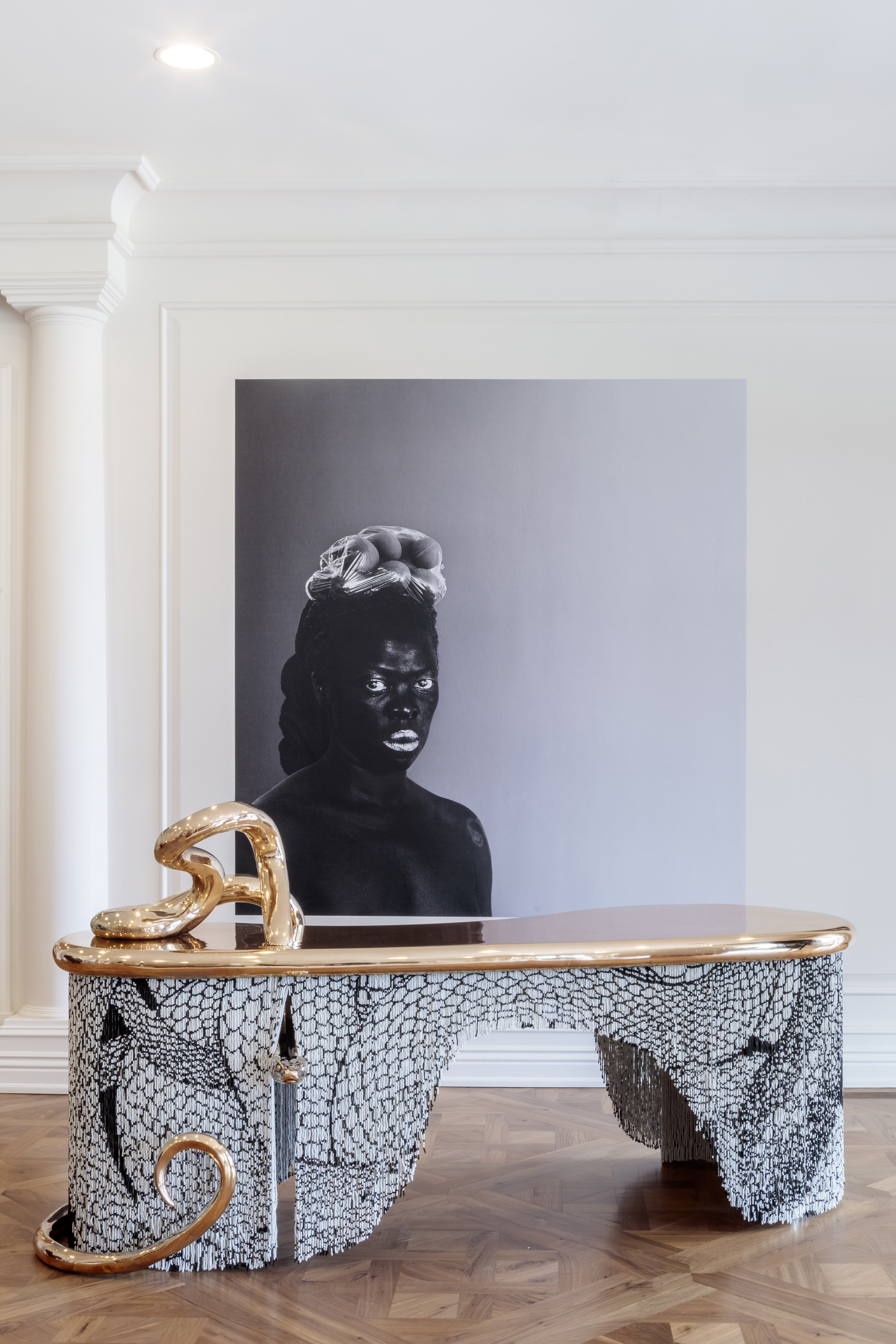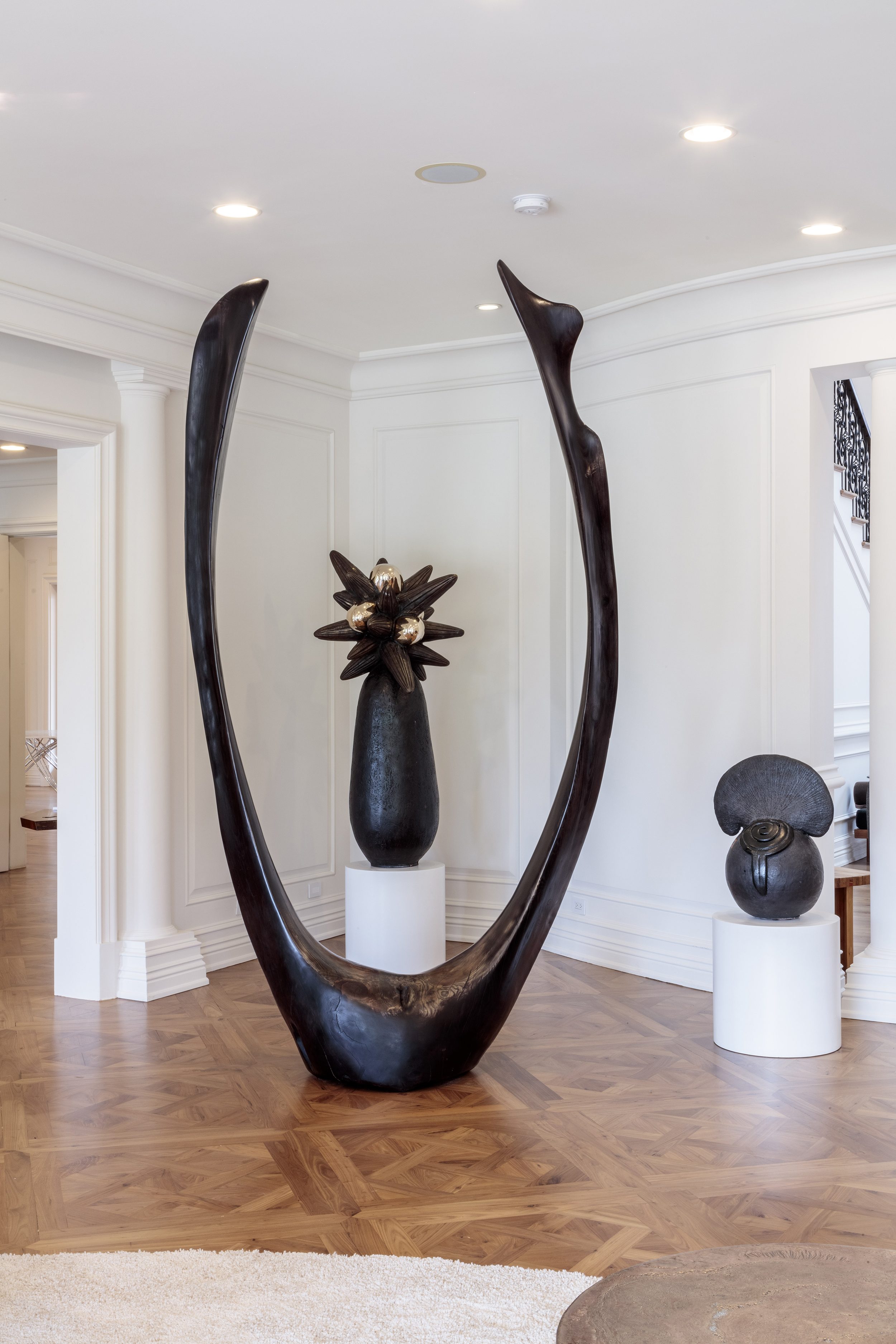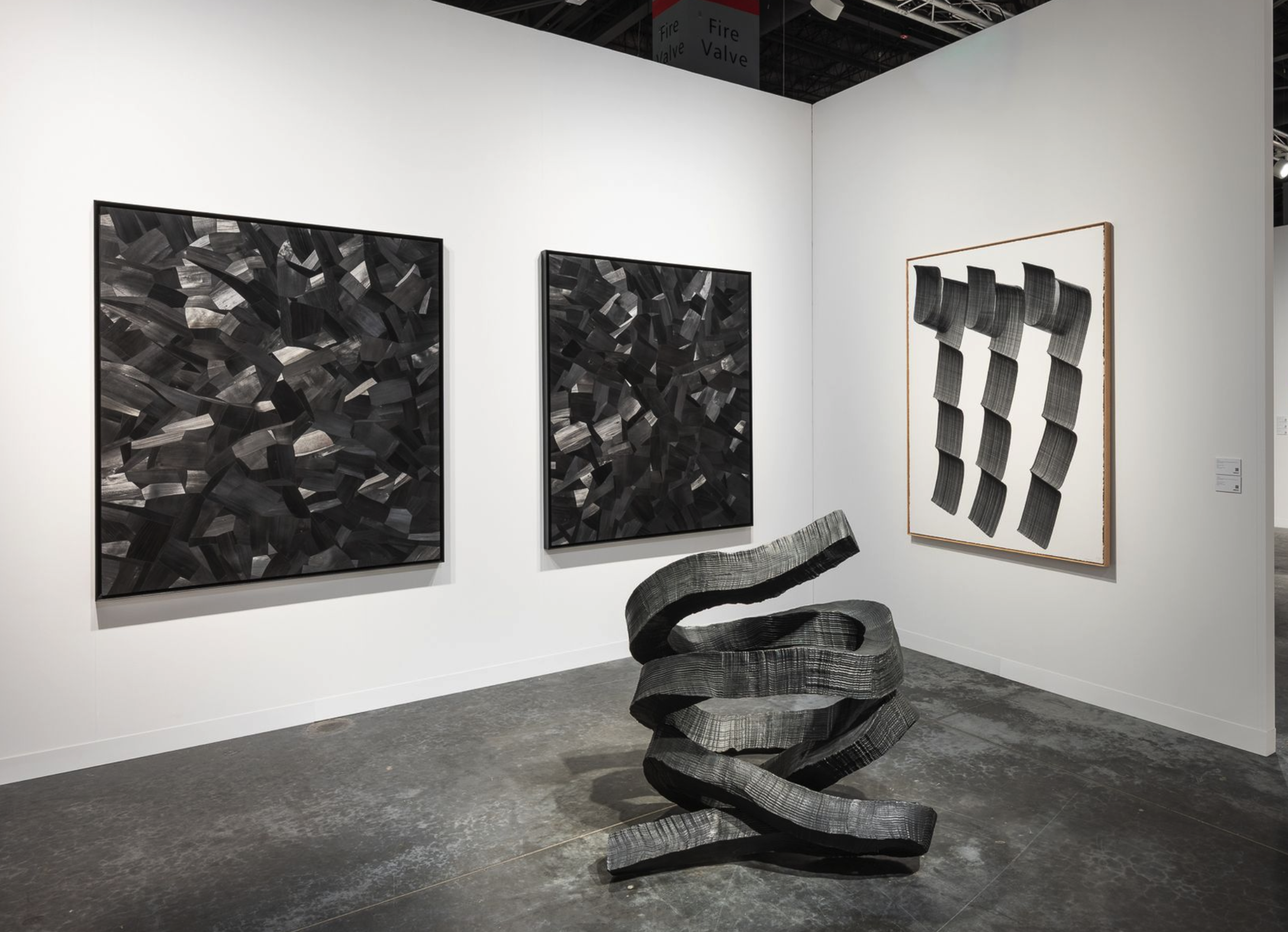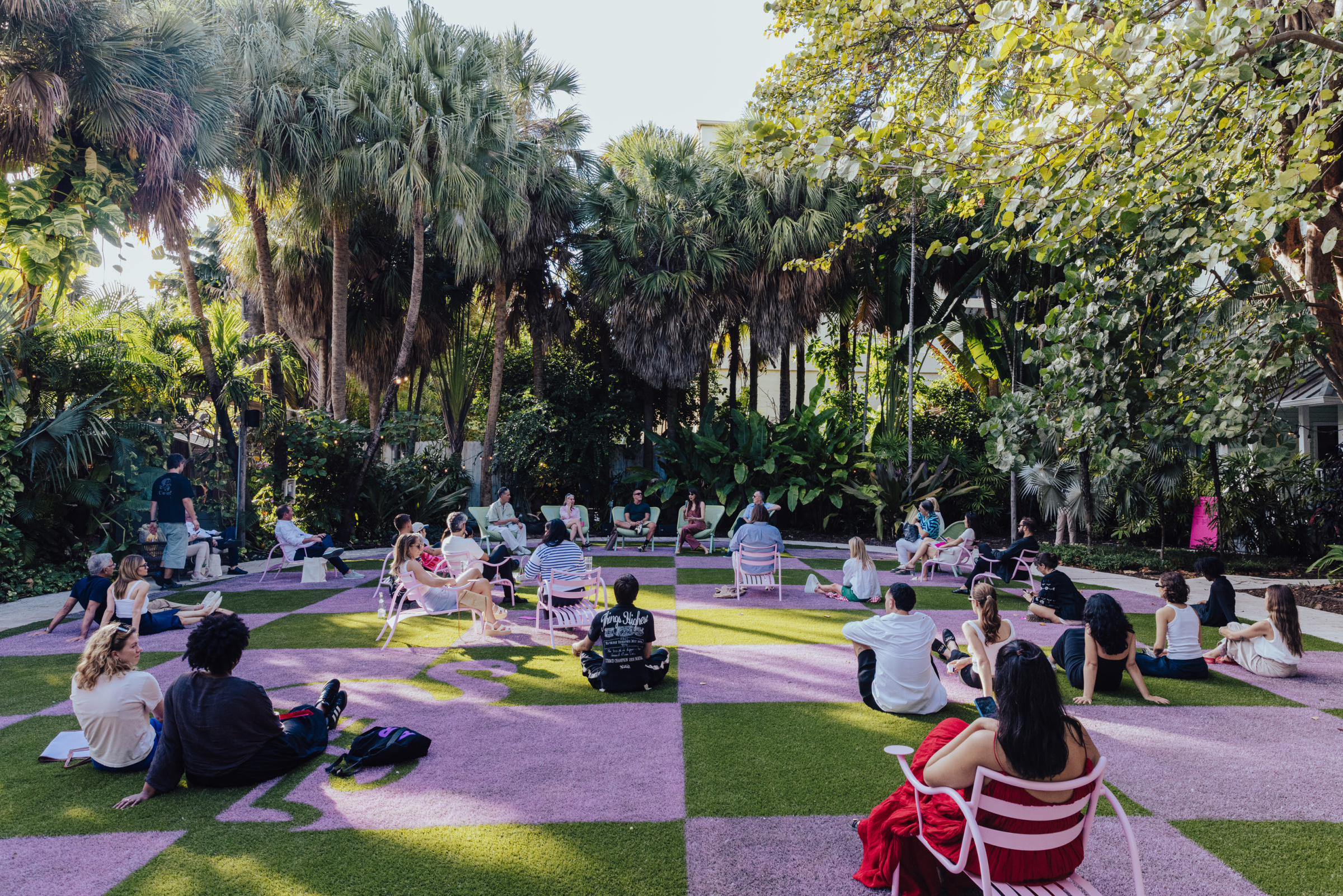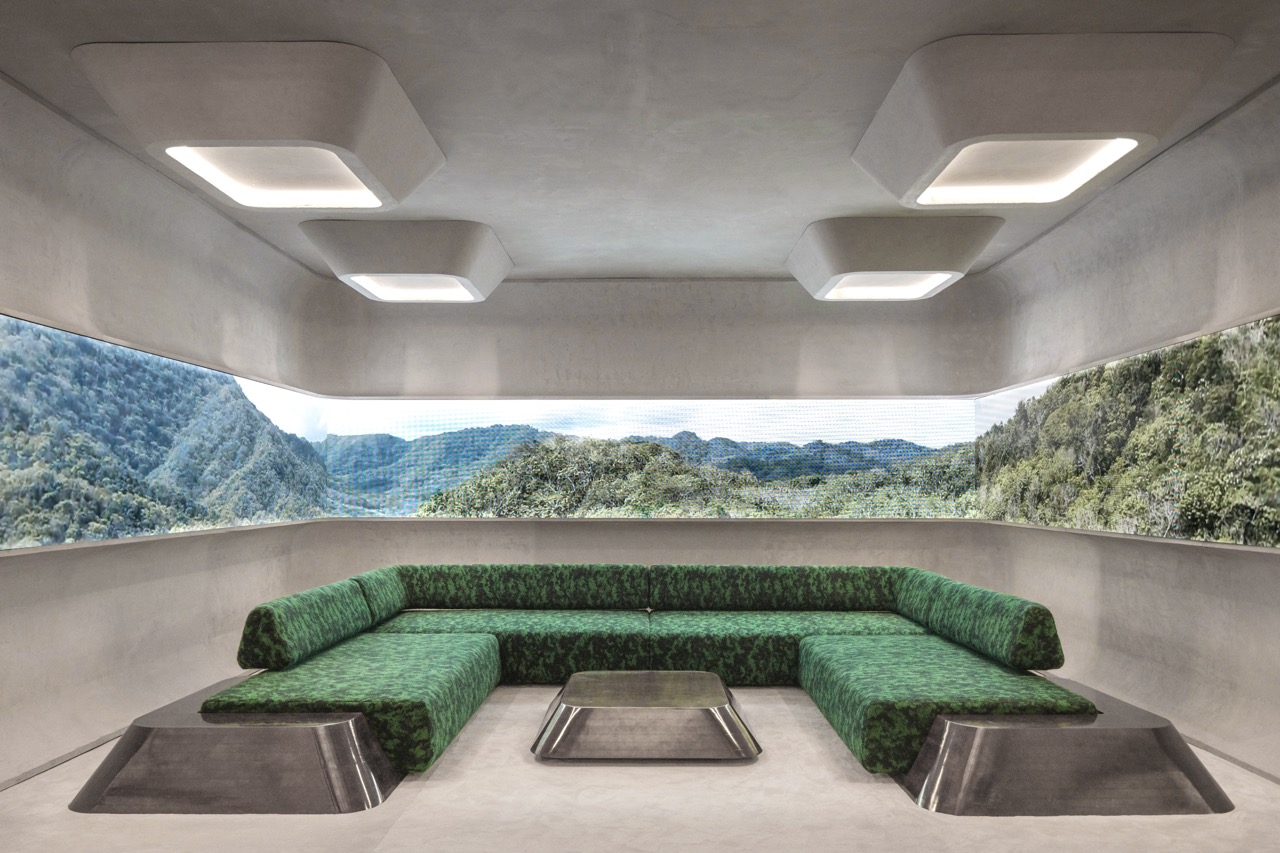I’m sitting in my beat up 2004 Honda Civic, back bumper hanging on by the grace of duct tape, and following a line of Porsches, Range Rovers, and Teslas up the driveway at a private estate in Holmby Hills. I’m hoping only the valet notices my beater, and thus my true class position, during the inaugural edition of DESIGN MIAMI.LA, the latest location in the fair’s growing empire.
This is Design Miami’s first fair since launching their global rebrand, which strangely didn’t include shedding the city from its name, despite having expanded to Basel and Paris. For their debut on the west coast, DESIGN MIAMI.LA brought 24 exhibitors to an invite-only fair in a mansion built by architect Paul R. Williams. Built in 1938, during Hollywood’s golden age, the 30 acre grounds reignites its glamor by filling every inch of its pool houses, gardens, guest rooms, parlors, and with contemporary and mid-century modern design. In addition to these, the Design at Large program staged large-scale installations in unexpected spots, like the greenhouse and tennis court; and a special exhibit, Podium, organized by Curatorial Director Ashlee Harrison, wound through the house, juxtaposing vintage design with contemporary favorites from the stock of exhibitors.
The setup was reminiscent of Felix Los Angeles, the art fair that takes over the Roosevelt Hotel, which meant that I peered into every bathroom to see which objects got placed onto porcelain. At Twentieth, two figurative plaster sculptures by Mattia Biagi were thrown into a green and brown marble shower, their large, graphic eyes registering mild surprise by passersby who caught them in the act. Gallery FUMI cleverly placed Max Lamb’s puddle-shaped tufted rugs around their bathroom, transforming a hygienic nuisance into a welcome surprise.
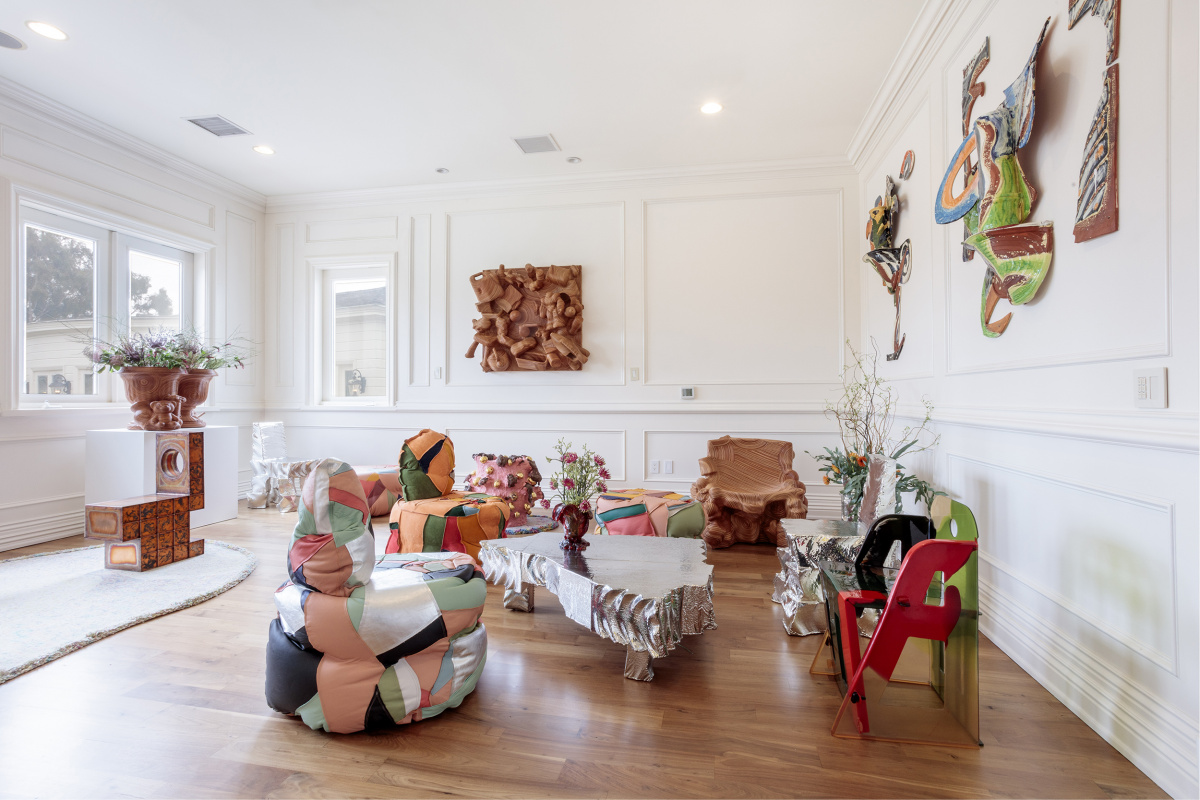
Salon94 in the Holmby Hills mansion. Built in 1938, during Hollywood’s golden age, the 30 acre grounds reignites its glamor by filling every inch of its pool houses, gardens, guest rooms, parlors, and with contemporary and mid-century modern design. Photo by Joshua White
Whether it be a signifier of current trends, or just a mass lean towards Los Angeles’s reputation as an extravagant, shallow, and showy city, the galleries brought plenty of color, texture, and ornamentation to the fair. Even the minimalist or monochrome pieces were disrupted by gradation in the patina, signs of handiwork, or swirls of raw material showing up on the surface. London’s Charles Burnand Gallery was the most muted booth, but still featured intricate variations within Mia Jung’s hand silvered Cloud Mirror (2021) and Kyeok Kim’s Second surface Lighting 1 and 2 (2024,) where swirls of copper wire were embellished with flecks of gold leaf.
Maybe it’s because we’re still mourning the recent loss of P22, the “Brad Pitt of mountain lions,” but animals were another notable motif running throughout the fair. The first thing I saw in the foyer was Lynx Table (1999) by Judy Kensley Mckie, part of the Podium series, a lanky, cast bronze wedge with feline features extruding from it. Upstairs, Monaco’s Lebretron Gallery showcased ceramics and vessels from French and European artists and designers, most of which took an anamalistic form. There was a hand glazed ram tea kettle, sculpted by Jacques Pouchain circa 1960, and a pitcher in the shape of a bullfrog, carved by Suzanne Ramie circa 1950.
All the critters personify Design Miami’s 2024 theme, “Living with Design.” devised by newly appointed Global Creative Director Henrik Purienne. Below, I’ve rounded up some of my favorites from the fair, which live and breathe luxury.
Southern Guild
- Rifuwo (Wealth) (2023) table by Rich Mnisi and photo by Zanele Muholi, who currently has a solo exhibition at SFMoMA. Photo by Charles White
- The South African collective, Southern Guild, is new to Los Angeles. Photo by Charles White
The South African collective is new to Los Angeles, having moved into Melrose Hill in February, and is making sure everyone knows they’ve moved into town. At DESIGN MIAMI.LA, they took the centrally located living room, just beyond that lynx in the foyer, so their animalistic objects were impossible to miss. In the spirit of their collaborative ethos, there is no one artist to call out from their display. I was obsessed with Rifuwo (Wealth) (2023), a table by Rich Mnisi, in which an enormous bronze python ensnaring a table, its body changing into black and white glass beads when encircling the fringed skirting. The snake pokes out underneath the stainless steel surface, its head parting the curtain of beads. Another highlight was the dove-shaped lounger, Yoko (2023), by Porky Hefer, which calls for peace not just in form but by creating a solitary environment with its enclosed, sheepskin pod in the body of the bird. The outside is made from leather and stitched with wide thread, like a boxing glove. Accompanying the furniture were dark, high contrast portraits by photographer Zanele Muholi, who currently has a solo exhibition at SFMoMA. The artist activist uses her lens to amplify the presence of queer people in South Africa. This was a strong debut from Southern Guild, and I’ll be keeping an eye on their upcoming exhibitions.
Nacho Carbonell / Carpenters Workshop Gallery

The Carpenter Workshop Gallery Presents Nacho Carbonell. Custom Trono (246/2023), a Seussian tree made from metal mesh, covered in pink paverpol and pigments to give it an additional texture. Within its mesh frame, pink-hued light bulbs pass for Himalayan salt lamps. Photo by Charles White
Nacho Carbonell is a Spanish designer based in the Netherlands, and he condenses fantastical, natural environments into single pieces of furniture. At the Carpenters Workshop Gallery, two of his works captured my attention. The first was the Custom Trono (246/2023), a Seussian tree made from metal mesh, covered in pink paverpol and pigments to give it an additional texture. Within its mesh frame, pink-hued light bulbs pass for Himalayan salt lamps. The tree sprouts from a concrete base, and embedded into that is a polished metal bench. The miniature landscape feels like a set piece from a play, bringing a park onto a stage. Nacho’s other highlight was Archaeological Folding Screen (TB 14/2022), another work that brings the outdoors inside. This one looks like a section cut from an ancient dig site, where pink concrete vessels are stacked and embedded into the screen’s rough slabs.
carpentersworkshopgallery.com
nachocarbonell.com
Carmen D’Apollonio / Friedman Benda
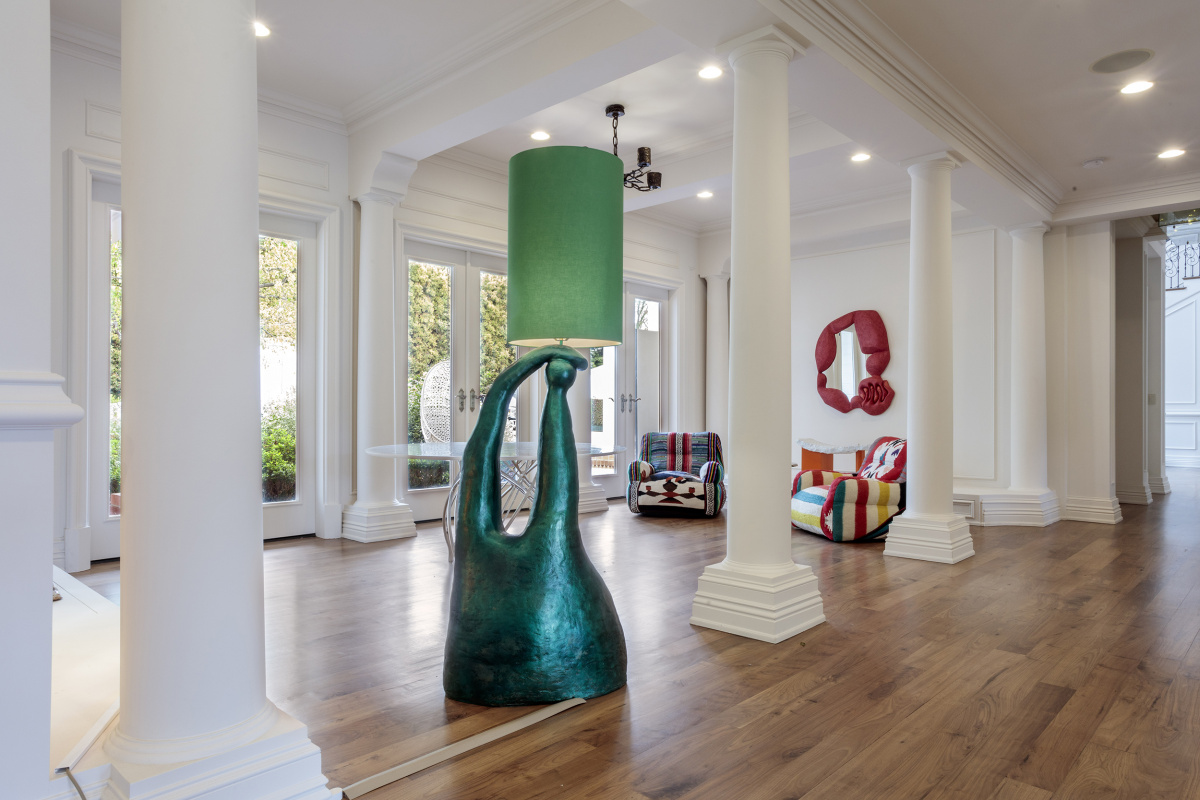
Carmen D’Apollonio combines humor, abstraction, and figuration to create little characters with big personalities. Photo by Joshua White
Friedman Benda often spotlights artists from marginalized backgrounds, and they continued to support this mission by prominently featuring self-taught artist Carmen D’Apollonio in their booth. Carmen combines humor, abstraction, and figuration to create little characters with big personalities. Let Me Pay My Taxes Today! (2024) slouches dejectedly, no doubt feeling pain from forking over her freelance earnings to the IRS. Just Being Me (2024), with its ceramic tentacles, is less figurative, but its title more relatable, as we all feel a little monstrous sometimes.
friedmanbenda.com
carmendapollonio.com
Erik Speer / Todd Merrill Studio
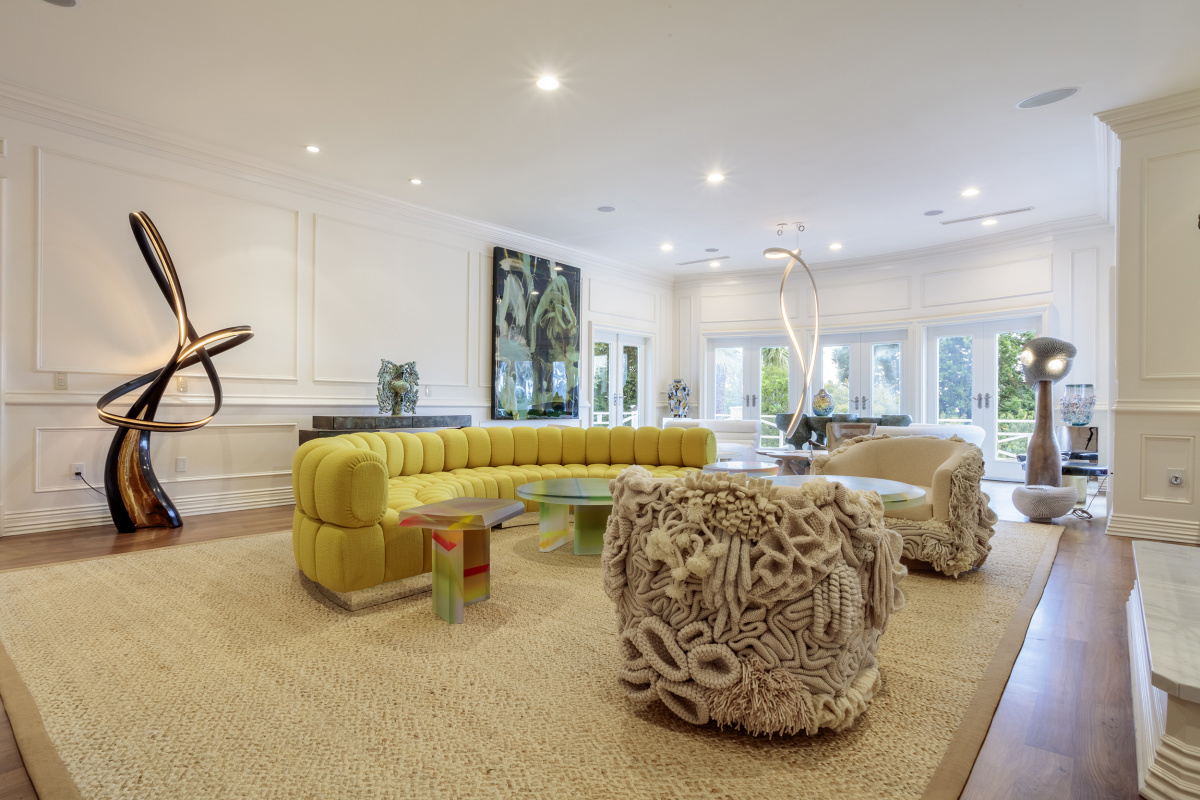
Todd Merrill Studio presents fiber artist Erik Speer’s first foray into furniture design. He applies his tapestry, made from cotton, silk, linen, and rayon, to a pair of swivel chairs to raise awareness about coral bleaching. Photo by Charles White
Nomadic artist Erik Speer has been spending most of his time at sea, learning to knit and crochet in between scuba diving expeditions. He’s combined these hobbies to make complex weavings of bleached coral reefs, a climate change-driven phenomenon that kills coral and upends ocean ecosystems. At Todd Merrill Studio, Erik shows off his first foray into furniture design. He applies his tapestry, made from cotton, silk, linen, and rayon, to a pair of swivel chairs. The plush, white forms have tons of dimension and texture, like fringe, frills, and ruffles, creating a haunting conversation starter.
toddmerrillstudio.com
esspeer.com
Bower Studios x Genesis Belanger / The Future Perfect
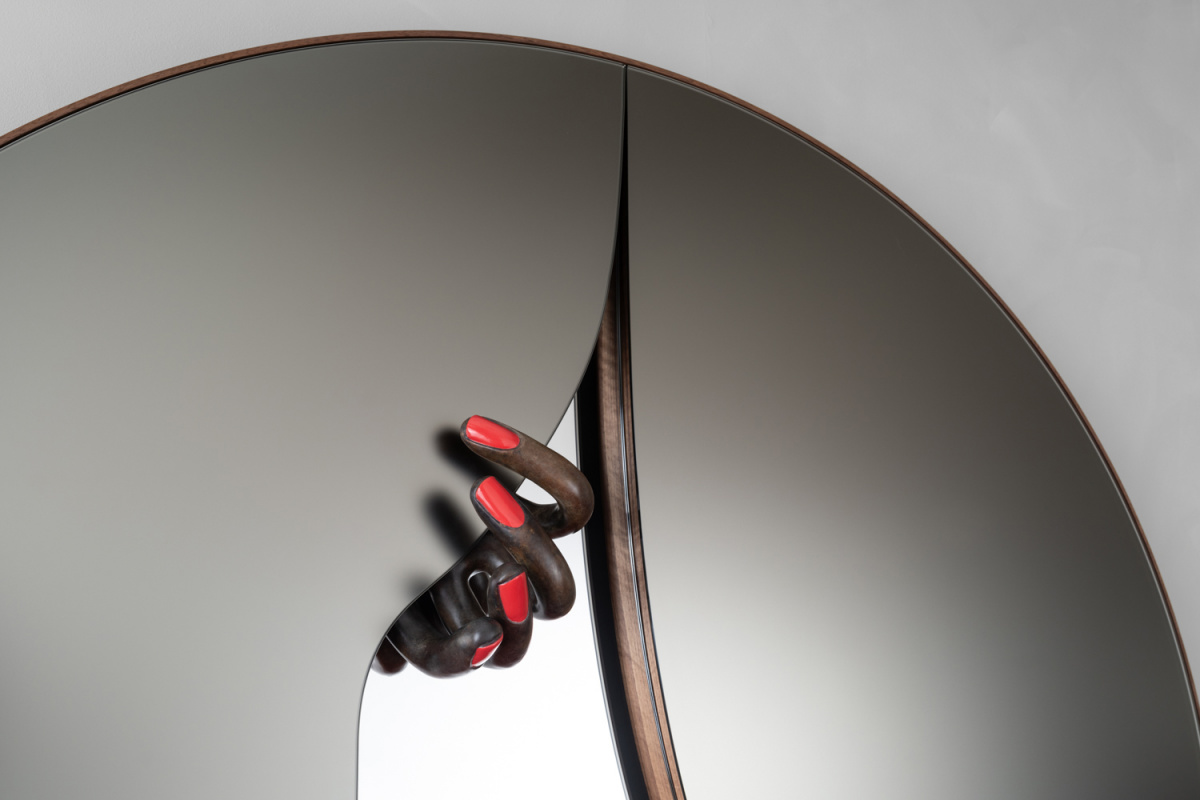
The Future Perfect shows a collaboration between Bower Studios and Genesis Belanger. Spindly bronze hands with bright, red nails emerge from the surface and pull back the opaque curtain to reveal a traditional mirror underneath. Photo by Joe Kramm
One of my favorites from DESIGN MIAMI.LA were these campy collaborations between artist Genesis Belanger and furniture designer Bower Studios at The Future Perfect. Genesis, inspired by pop art, often incorporates disembodied limbs into her sculptures; floating arms fold like spaghetti over chaise lounges. Bower Studios primarily makes sleek, precise mirrors. In this collaboration, The Space Between Certainty, spindly bronze hands with bright, red nails emerge from the surface and pull back the opaque curtain to reveal a traditional mirror underneath.
thefutureperfect.com
instagram.com/genesisbelanger
bower-studios.com
Raise the Moral
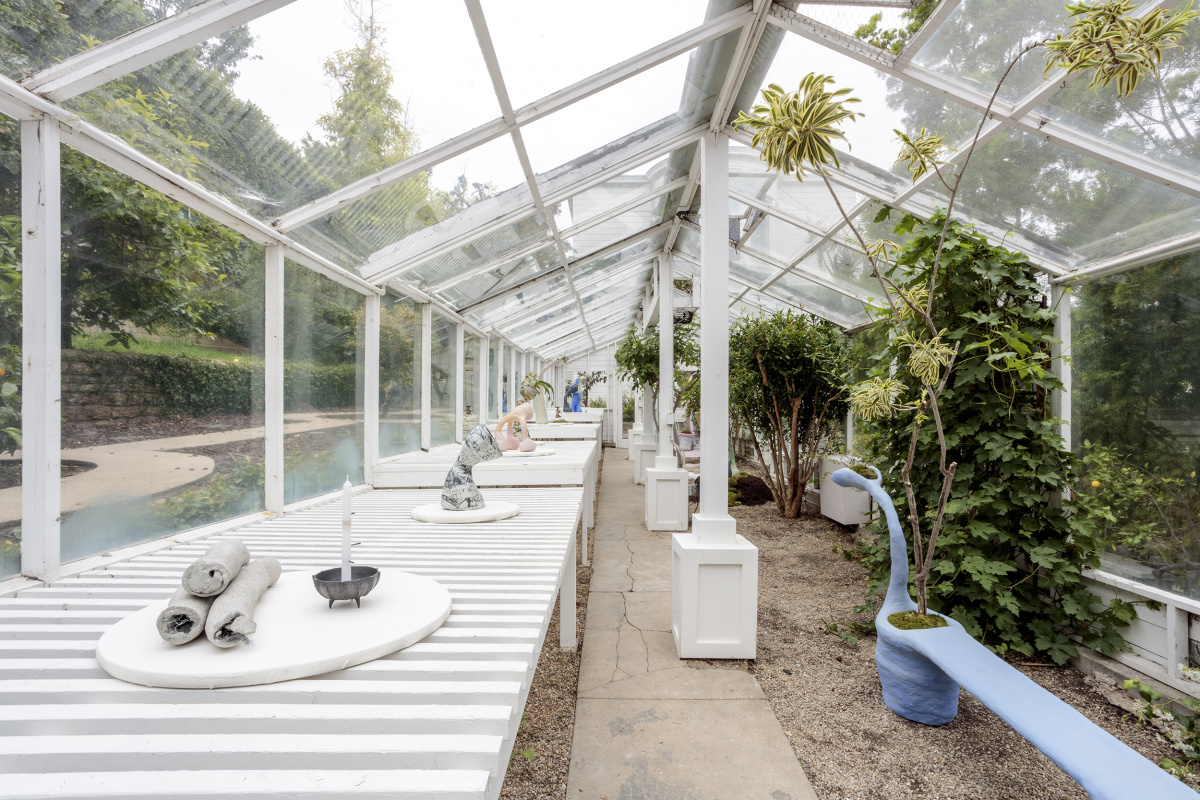
Raise the Moral’s “It’s not the Mushrooms, It’s Me Talking,” an exhibit that featured a variety of lanky ceramic sculptures that doubled as planters, clocks, and fountains. Photo by Joshua White
Earlier this year, we chatted with Moral Turgeman of Raise the Moral ahead of Frieze Los Angeles, and we were excited to encounter more of their sensory designs at the fair. Still working closely with industrial designer Kelsey Falter, Raise the Moral took over the estate’s greenhouse with It’s not the Mushrooms, It’s Me Talking, an exhibit that featured a variety of lanky ceramic sculptures that doubled as planters, clocks, and fountains. Some pieces incorporated image transfers from the artist Sandrine Abessera, coating the vessels with pictures of daisies or blackbirds. Moral and Kelsey actually created the majority of these works on site through an artist residency that made the greenhouse their studio.
raisethemoral.com
abesseraeditions.com
Nick Missel / Wexler Gallery
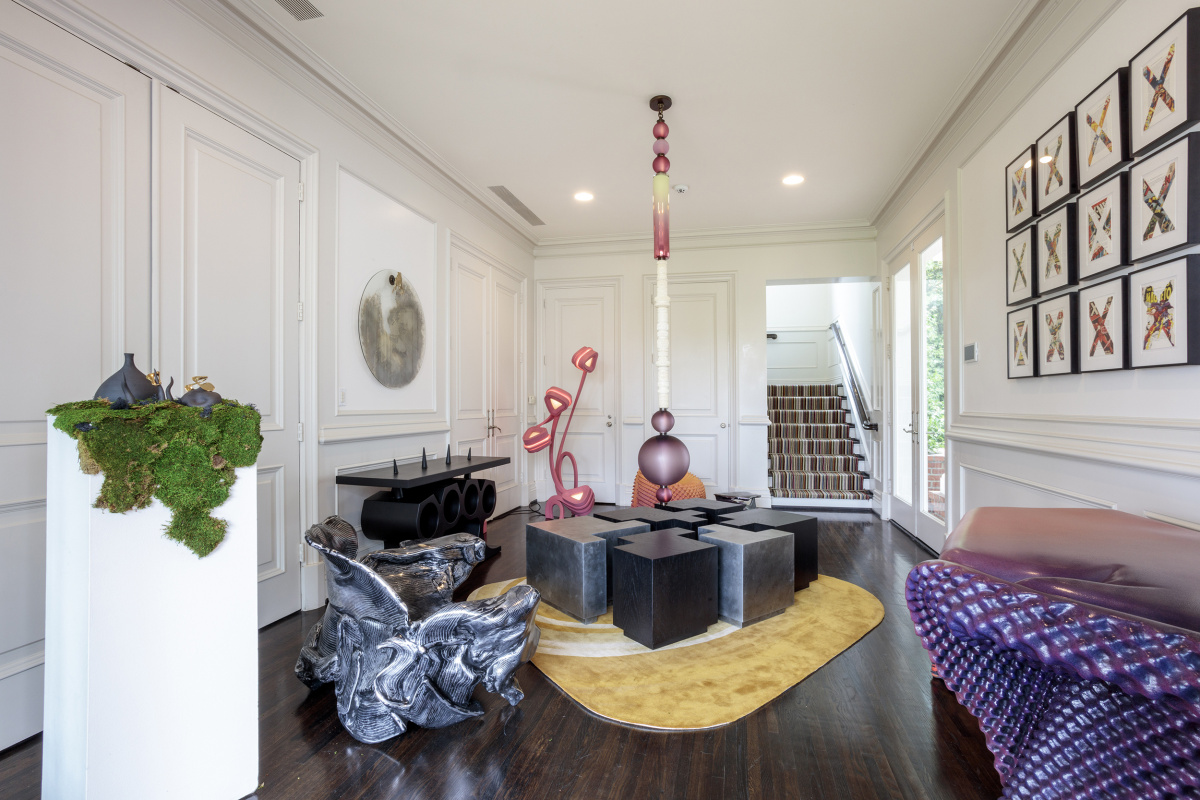
Nick Missel casts packaging materials in resin and silicone. Photo by Joshua White
A lot of designers have been playing with resin and silicone lately, and I found Nick Missel to have a unique take on the process. He likes to keep the process visible, holding onto messy edges that incidentally play with color and form. His Infrathin Collection of tables and benches, including Tiger Eye (2024), have drippy ridges, revealing the layers of cardboard which have been memorialized in a silicone skin. In the REM Collection, tables like Twisted Fantasy (2024) are enveloped in bumpy foam sheets cast in resin. Nick doesn’t hide the forms of his packing materials, instead leaning into their design like Duchamp did with readymades.

